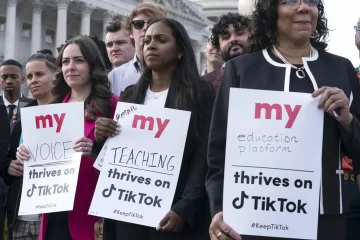Ocasio-Cortez’s statements are not a mere political hyperbole. The Green New Deal offers a radical transformation of the American economy in an effort to put the country on a greener footing and promote economic and social justice issues that have become key components of the progressive political platform.
A grassroots coalition led by the Sunrise Movement and endorsed by Ocasio-Cortez have drafted legislation calling for the creation of a Select Committee for a Green New Deal in the House of Representatives. The proposal calls for the virtual elimination of greenhouse gases emitted by heavy industry by 2030, with the goal of using renewable energy sources to supply 100 percent of America’s national power needs. The legislation also calls for infrastructure improvements, namely a “national, energy-efficient smart grid,” and upgrades to private residences to improve energy efficiency and consumption. In doing so America can take the lead in exporting green technologies to the rest of the world, providing a boon for the American economy while addressing the growing problem of climate change.
So far, so good, but the Green New Deal extends well beyond climate policy. Drastically reforming America’s energy policy will require immense government stimulus packages. Green New Dealers want to use increased government spending to “virtually eliminate poverty in the United States and to make prosperity, wealth and economic security available to everyone participating in the transformation.” The legislation promises “a living wage job to every person who wants one” through a job guarantee program. They encourage labour unions to play a major role in transitioning the American economy from fossil fuels to green energy. The plan would also work to “mitigate deeply entrenched racial, regional and gender-based inequalities in income and wealth” by ensuring support for minority communities, although the legislation offers few specifics on how this would be achieved.
Conservatives have been quick to decry the proposed legislation. A report by the Senate Republican Policy Committee suggested that the cost would exceed $7 trillion. The same report also warned that increased government involvement in a job guarantee program would “distort the labour market.” Jarrett Stepman at The Daily Signal went further, calling the plan “a Trojan Horse for socialism.”
The plan has not been fully embraced by prominent politicians on the left either. While democratic presidential hopefuls including Senator Elizabeth Warren, Senator Kamala Harris, and Senator Cory Booker have all stated their support for a Green New Deal, they have not adopted some of the policy’s more radical stipulations. Speaker of the House Nancy Pelosi refused calls to create a committee specifically devoted to installing a Green New Deal, instead empanelling a Select Committee on the Climate Crisis. While it sounds like a positive step, the new committee would lack subpoena power, meaning it would not be able to compel members of the EPA, fossil fuel industrialists, or climate scientists to appear before the panel.

Even among Green New Dealers there is concern over the eventual direction of the movement. Facing Republican opposition in Congress, Green New Dealers fear that the eventual legislation would be watered-down considerably. Others, including Nobel Laureate Joseph E. Stiglitz, are concerned that as the Green New Deal increasingly moves into the legislative body it will lose the connection with grassroots activists that helped the movement emerge in the first place.
As the recent report from the Intergovernmental Panel on Climate Change demonstrates, governments must act immediately to alleviate the catastrophic damages posed by a rapidly warming planet. The Green New Deal offers one potential solution. For it to have any affect, however, the Democrats must stop quibbling about the policy details and start focusing on selling the initiative to the American public.
An example can be drawn from the original New Deal, crafted by President Franklin D. Roosevelt’s administration during the Great Depression. When the Democrats took power after the 1932 election, they passed a bundle of economic stimulus packages that collectively became known as the “New Deal.” The policies that made up the New Deal had been discussed in Democratic circles throughout the 1920s, but only coalesced into concrete legislation after President Roosevelt had already sold the American people on his vision.
The Democrats could push for a Green New Deal now, while they hold power in the House of Representatives. They are unlikely to get anywhere with the Republicans in control of the Senate and the White House. The best hope for Green New Dealers—and the reason why the emphasis needs to be on presentation—is the 2020 election, where the Democrats have a chance to seize power in both branches of government.
The diverse coalition of the modern Democratic voting bloc could be a blessing in this regard. The Green New Deal, if sold properly, can be all things to all people. Subsidies and investment in renewable energy and green infrastructure will fulfil the wishes of the environmentalists. Some sort of guarantee that the green revolution will include support for minorities and impoverished communities will please the social justice activists in the party. A reinvigoration of labour and a promise to actively assist in the re-education of workers whose jobs have been made obsolete by changing environmental demands will shore up support in the moderate wing of the party, particularly in key electoral states in the Rust Belt. Rather than get caught up in petty ideological disputes and displays of progressive bona fides, leaders and grassroots activists on the left must emphasize the shared interests of the broad liberal coalition and build consensus rather than division.
In 2016, Donald Trump swept into power by promising Americans a new future, one that hearkened back to imagined days when America was “great.” The Green New Deal offers a different future for America, one driven by the positive potentials of the future rather than the toxic nostalgia of an imagined past. The task now is to sell that vision. Should the Green New Dealers succeed, they could shape the future of the Democratic Party and the country at large.


